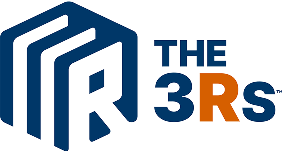Navigating the 2025 Tariff Landscape: A Practical Guide for Small and Medium-Sized Business Owners
Based on key takeaways from the Bacon & Business Tariff Talk, April 23, 2025, part of the Bacon and Business Quarterly Series
Thank you to our panelists Thomas Armes from PNC Bank, Brock Cline from Insperity, Rico Falsone from Bradley, and Damon Pike from BDO
By Cannon Carr (EP Wealth Advisors), Jeff Cunningham (Bradley) and Michael Hopton (Southern First Bank), as sponsors of the Quarterly Series, published April 30, 2025
Big Picture Messages from the Panel
The U.S. has entered a new era of trade protection with significant tariffs now in place:
-
Tariff application has “paused” for 90 days, but consensus was that the trade agreement process could take six to 18 months, rather than 90 days. There’s a lot of complexity to trade negotiations.
-
The US-China process of de-coupling started well before the change in tariff policy and will likely be a long-term trend. Tariffs are merely playing a part to accelerate or shape the evolution. Plan accordingly.
-
Don’t be afraid to negotiate better terms with suppliers. They usually don’t want to lose your business and can help play part in the cost management solution.
-
Better managed companies are taking advantage of the uncertainty. Never waste a good crisis!
-
They are using the cover of tariffs to raise prices 5%-10%, to extend payment terms to net 60 or even 90 days, and to use their capital resources flexibly (factoring, use of revolving credit, etc.).
-
They are also using the cover of tariffs to improve internal performance, such as trimming unproductive staff or divesting underperforming product lines.
-
Healthy balance sheets are allowing them to also make favorable acquisitions, sometimes at favorable multiples.
-
-
Our panelists estimated that about 20% of the small/medium-sized businesses they see are in a position to act proactively. They put themselves in this position intentionally, to be ready for a downturn. That’s a good position to be in!
As a business owner, you’re likely feeling the effects already. Costs are up, supply chains are strained, and planning for the future has become more challenging. While there are hints of potential de-escalation, for now, these tariffs are a business reality you need to navigate.
Why Your Business May Be Particularly Vulnerable
Small and medium businesses face unique challenges in this environment:
-
Less negotiating power with suppliers
-
Tighter financial resources to absorb higher costs
-
Limited capacity to quickly change supply chains
The impacts you’re likely experiencing include:
-
Higher costs for imported materials and goods
-
Supply chain disruptions and inventory problems
-
Pressure on your competitive pricing
-
Difficulty making long-term business plans
-
Potential loss of export markets due to retaliatory tariffs
Practical Strategies to Help Protect Your Business
1. Make Your Supply Chain More Resilient
Find alternative suppliers
-
Look for options in countries not heavily affected by tariffs
-
Understand Country of Origin (COO) rules when evaluating new suppliers
-
Consider that the lowest price may not mean the lowest total cost when tariffs are added
Consider moving production closer to home
-
Evaluate if moving production to nearby countries (Mexico, Canada) makes financial sense
-
Look into bringing some manufacturing back to the U.S.
-
Be realistic about challenges like finding skilled workers and higher costs
Use Foreign Trade Zones (FTZs) strategically
-
These special zones let you store, modify, and re-export goods without immediate tariff payments
-
Can improve cash flow by deferring or eliminating tariffs on goods you’ll eventually re-export
Explore “tariff engineering”
-
Minor modifications to your products or component sourcing might qualify for lower tariff rates
-
Work with experts (customs brokers, trade attorneys) to do this properly
2. Strengthen Your Financial Position
Cut costs where possible
-
Look for efficiencies throughout your business to offset tariff-related expenses
-
Focus on areas that won’t impact your product quality or customer experience
Protect against currency swings
-
If you do international business, consider currency hedging strategies
-
Talk to your financial advisor about extending hedging timeframes given the current volatility
Manage your cash flow aggressively
-
Keep enough cash reserves to handle unexpected cost increases
-
Try to negotiate better payment terms with suppliers
-
Use data to optimize your inventory levels
3. Navigate the Legal and Regulatory Landscape
Partner with experts
-
Work with experienced customs brokers to ensure accurate product classification
-
Consider consulting with a trade attorney to understand your options
-
Stay informed about International Emergency Economic Powers Act (IEEPA) developments
Monitor policy changes
-
Keep an eye on updates from U.S. Customs and Border Protection
-
Watch for rulings from the Court of International Trade, which handles tariff disputes
-
Join industry associations that track and advocate on trade issues
4. Adapt Your Market Strategy
Diversify your markets
-
Reduce dependence on regions affected by retaliatory tariffs
-
Research and develop new domestic and international opportunities
Emphasize your unique value
-
Double down on what makes your business special beyond just price
-
Highlight quality, service, innovation, or expertise to maintain customer loyalty despite price adjustments
Consider ethical sourcing as a differentiator
-
If relevant to your industry, emphasize fair trade and ethical practices
-
This can attract customers willing to pay more for responsibly-sourced products
Get involved in advocacy
-
Join with others in your industry to voice concerns to policymakers
-
Collective efforts can sometimes influence policy adjustments
Plan for different scenarios
-
Develop contingency plans for various possible changes in tariff policies
-
This preparation allows you to react quickly when the situation evolves
Moving Forward
The current tariff environment is challenging but navigable. By implementing these strategies, your business can become more resilient and potentially find new opportunities amid the disruption. Stay vigilant, be proactive, and remember that adaptation is key to sustainability in today’s evolving trade landscape.
Quick Reference: Key Trade Terms
- Baseline Tariff: The standard 10% tariff now applied to most imports (effective April 5, 2025)
- Reciprocal Tariffs: Higher, country-specific tariffs imposed based on perceived trade imbalances
- Country of Origin (COO): Rules determining where a product is considered to be made, affecting which tariffs apply
- Customs Broker: Licensed professional who helps navigate import/export regulations
- Automated Commercial Environment (ACE): The electronic system used by U.S. Customs for import/export processing
- Court of International Trade (CIT): Federal court that handles disputes related to tariffs and trade
- Foreign Trade Zones (FTZs): Designated areas where goods can be stored or modified without immediate tariff payment
- Nearshoring: Moving operations to nearby countries (like Mexico or Canada)
- Onshoring/Reshoring: Bringing production back to the United States
Share this Story
Navigating the 2025 Tariff Landscape: A Practical Guide for Small and Medium-Sized Business Owners
Based on key takeaways from the Bacon & Business Tariff Talk, April 23, 2025, part of the Bacon and Business Quarterly Series
Thank you to our panelists Thomas Armes from PNC Bank, Brock Cline from Insperity, Rico Falsone from Bradley, and Damon Pike from BDO
By Cannon Carr (EP Wealth Advisors), Jeff Cunningham (Bradley) and Michael Hopton (Southern First Bank), as sponsors of the Quarterly Series, published April 30, 2025
Big Picture Messages from the Panel
The U.S. has entered a new era of trade protection with significant tariffs now in place:
-
Tariff application has “paused” for 90 days, but consensus was that the trade agreement process could take six to 18 months, rather than 90 days. There’s a lot of complexity to trade negotiations.
-
The US-China process of de-coupling started well before the change in tariff policy and will likely be a long-term trend. Tariffs are merely playing a part to accelerate or shape the evolution. Plan accordingly.
-
Don’t be afraid to negotiate better terms with suppliers. They usually don’t want to lose your business and can help play part in the cost management solution.
-
Better managed companies are taking advantage of the uncertainty. Never waste a good crisis!
-
They are using the cover of tariffs to raise prices 5%-10%, to extend payment terms to net 60 or even 90 days, and to use their capital resources flexibly (factoring, use of revolving credit, etc.).
-
They are also using the cover of tariffs to improve internal performance, such as trimming unproductive staff or divesting underperforming product lines.
-
Healthy balance sheets are allowing them to also make favorable acquisitions, sometimes at favorable multiples.
-
-
Our panelists estimated that about 20% of the small/medium-sized businesses they see are in a position to act proactively. They put themselves in this position intentionally, to be ready for a downturn. That’s a good position to be in!
As a business owner, you’re likely feeling the effects already. Costs are up, supply chains are strained, and planning for the future has become more challenging. While there are hints of potential de-escalation, for now, these tariffs are a business reality you need to navigate.
Why Your Business May Be Particularly Vulnerable
Small and medium businesses face unique challenges in this environment:
-
Less negotiating power with suppliers
-
Tighter financial resources to absorb higher costs
-
Limited capacity to quickly change supply chains
The impacts you’re likely experiencing include:
-
Higher costs for imported materials and goods
-
Supply chain disruptions and inventory problems
-
Pressure on your competitive pricing
-
Difficulty making long-term business plans
-
Potential loss of export markets due to retaliatory tariffs
Practical Strategies to Help Protect Your Business
1. Make Your Supply Chain More Resilient
Find alternative suppliers
-
Look for options in countries not heavily affected by tariffs
-
Understand Country of Origin (COO) rules when evaluating new suppliers
-
Consider that the lowest price may not mean the lowest total cost when tariffs are added
Consider moving production closer to home
-
Evaluate if moving production to nearby countries (Mexico, Canada) makes financial sense
-
Look into bringing some manufacturing back to the U.S.
-
Be realistic about challenges like finding skilled workers and higher costs
Use Foreign Trade Zones (FTZs) strategically
-
These special zones let you store, modify, and re-export goods without immediate tariff payments
-
Can improve cash flow by deferring or eliminating tariffs on goods you’ll eventually re-export
Explore “tariff engineering”
-
Minor modifications to your products or component sourcing might qualify for lower tariff rates
-
Work with experts (customs brokers, trade attorneys) to do this properly
2. Strengthen Your Financial Position
Cut costs where possible
-
Look for efficiencies throughout your business to offset tariff-related expenses
-
Focus on areas that won’t impact your product quality or customer experience
Protect against currency swings
-
If you do international business, consider currency hedging strategies
-
Talk to your financial advisor about extending hedging timeframes given the current volatility
Manage your cash flow aggressively
-
Keep enough cash reserves to handle unexpected cost increases
-
Try to negotiate better payment terms with suppliers
-
Use data to optimize your inventory levels
3. Navigate the Legal and Regulatory Landscape
Partner with experts
-
Work with experienced customs brokers to ensure accurate product classification
-
Consider consulting with a trade attorney to understand your options
-
Stay informed about International Emergency Economic Powers Act (IEEPA) developments
Monitor policy changes
-
Keep an eye on updates from U.S. Customs and Border Protection
-
Watch for rulings from the Court of International Trade, which handles tariff disputes
-
Join industry associations that track and advocate on trade issues
4. Adapt Your Market Strategy
Diversify your markets
-
Reduce dependence on regions affected by retaliatory tariffs
-
Research and develop new domestic and international opportunities
Emphasize your unique value
-
Double down on what makes your business special beyond just price
-
Highlight quality, service, innovation, or expertise to maintain customer loyalty despite price adjustments
Consider ethical sourcing as a differentiator
-
If relevant to your industry, emphasize fair trade and ethical practices
-
This can attract customers willing to pay more for responsibly-sourced products
Get involved in advocacy
-
Join with others in your industry to voice concerns to policymakers
-
Collective efforts can sometimes influence policy adjustments
Plan for different scenarios
-
Develop contingency plans for various possible changes in tariff policies
-
This preparation allows you to react quickly when the situation evolves
Moving Forward
The current tariff environment is challenging but navigable. By implementing these strategies, your business can become more resilient and potentially find new opportunities amid the disruption. Stay vigilant, be proactive, and remember that adaptation is key to sustainability in today’s evolving trade landscape.
Quick Reference: Key Trade Terms
- Baseline Tariff: The standard 10% tariff now applied to most imports (effective April 5, 2025)
- Reciprocal Tariffs: Higher, country-specific tariffs imposed based on perceived trade imbalances
- Country of Origin (COO): Rules determining where a product is considered to be made, affecting which tariffs apply
- Customs Broker: Licensed professional who helps navigate import/export regulations
- Automated Commercial Environment (ACE): The electronic system used by U.S. Customs for import/export processing
- Court of International Trade (CIT): Federal court that handles disputes related to tariffs and trade
- Foreign Trade Zones (FTZs): Designated areas where goods can be stored or modified without immediate tariff payment
- Nearshoring: Moving operations to nearby countries (like Mexico or Canada)
- Onshoring/Reshoring: Bringing production back to the United States



